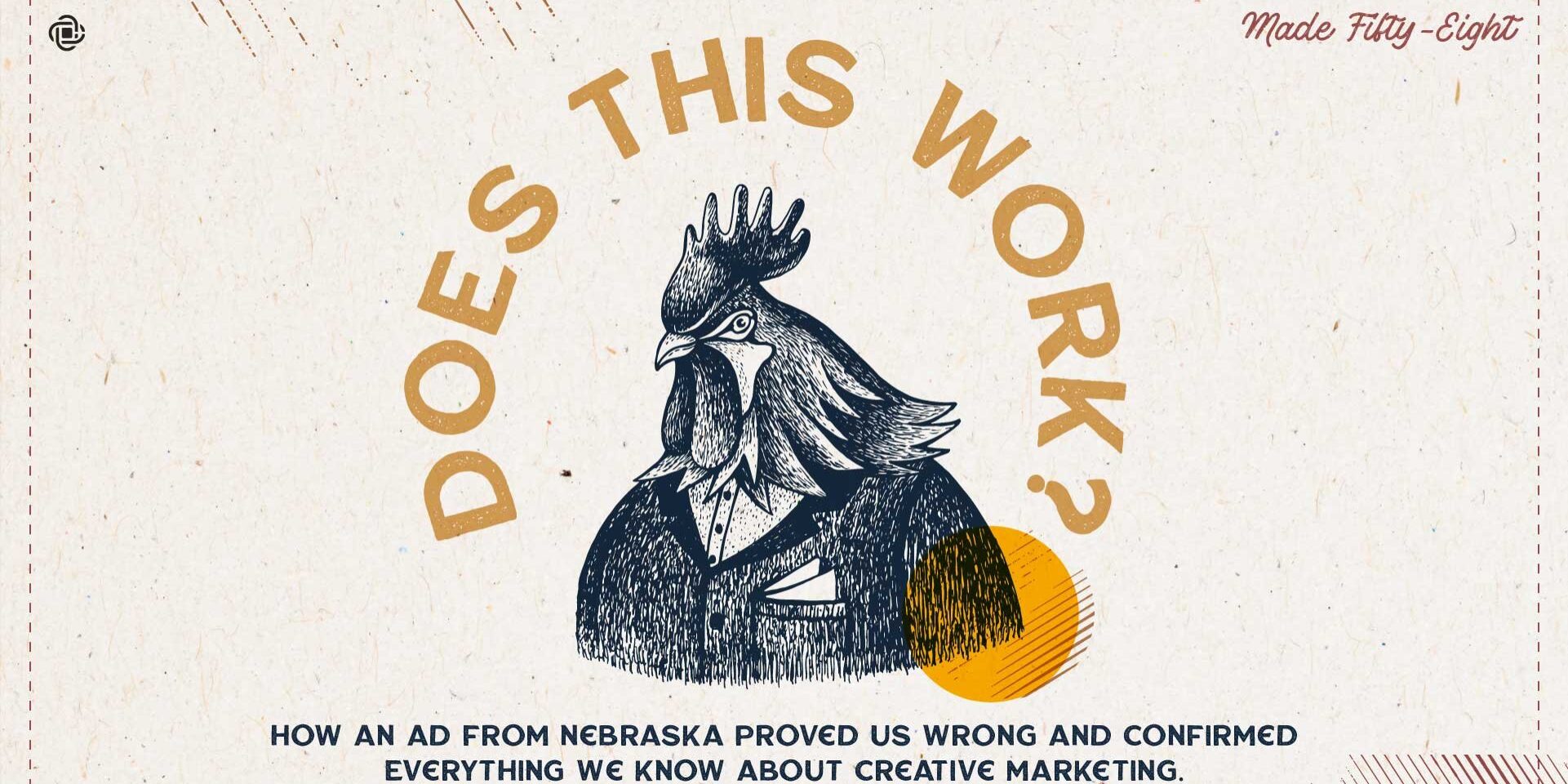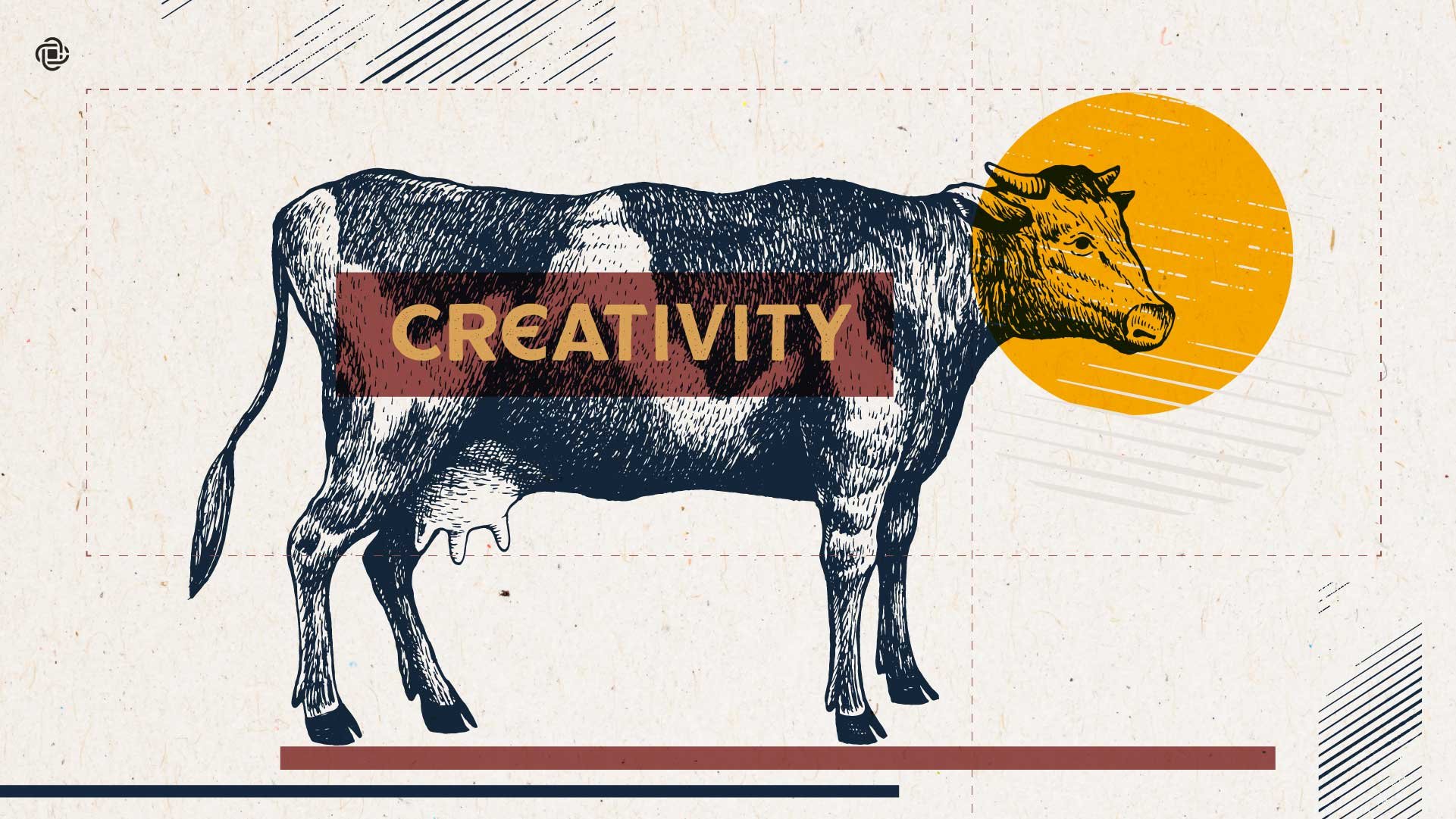A few weeks ago, one of the CultureCraft team stumbled upon this ad making the rounds for the State of Nebraska’s tourism department.
Now, we’re going to be honest and transparent here – we mercilessly f**king roasted this thing. It, and the entire extended marketing rebrand and campaign that Nebraska Tourism has been running since 2019.
We made jokes about wagons, corn, Laura Ingalls Wilder, more corn (so much f**king corn), crappy college football and bad advertising. We brought up Target’s highly criticized attempts at introducing a line of pioneer woman dresses in their stores. Nebraska’s marketing felt like an adjacently bad idea.
And we aren’t just a team of snooty city-folk bashing on a poor mid-western State’s attempts at building a little excitement for one of the most unexciting places on earth. Our copywriter Ruben Rodriguez went to college in Nebraska. Our Designer Moriah Manford is from Kansas. And our Founder and CEO Nick Richtsmeier (who proclaims that nothing, and least of all that ad, could get him to visit Nebraska) lives, works, and farms from Iowa. IOWA! Arguably the second most uncool state in the mid-west.
BEHIND NEBRASKA!
Look, we understand creative marketing has to serve specific distinctives to be successful. And those distinctives center on Customer, Brand, and Outcomes.
If creative marketing doesn’t serve those distinctives, you potentially end up with covered wagons and a Little House On the Prairie knockoff ad. You write advertising copy that says, “Honestly, it’s not for everyone.”
No shit.
But then we did some digging on Nebraska’s campaign, and partner, hang on to your cornhole.
Because we might have gotten it all wrong.
Creative Marketing Alone Serves No One
Marketing and ad agencies everywhere keep extolling the importance of brand’s becoming more and more creative when it comes to their marketing. “It’s the only way to differentiate,” they yell! And the ad for Nebraska is certainly different.
No one else (that we could find) is trying to sarcastically sell their state with marketing that focuses on the perceived oddities and negatives of the state and reframing them as positives.
Or, in the case of the Nebraska ad, extolling your product’s stereotypes, confirming them, and then making the reader feel bad for not wanting that.
And it takes more than random, albeit eye-catching or disruptive, copy and design to get customers to lend their attention, time, and hard earned money to your product or brand as well.
Creativity, for its own sake, serves nothing but the creative and the brand, and wins few actual customers.
CEOs, beware! When an ad agency tells you you need to just be more creative and daring, without tying that work to any distinctives, a pretty but ineffective campaign\email\ad is nigh.
But here’s the thing about the Nebraska campaign: It worked. And it’s still working. To the tune of $3.5 billion the first year they tried it. That’s a lot of corn.
While looking like abject failure on the surface, the Nebraska campaign centers on 3 specific distinctives that all creative marketing should be centered on. Here they are.
3 Distinctives for Making Creative Marketing
When we make or evaluate creative marketing, we have to find anchors to tie it to. These distinctives aren’t merely constraints, but ways of answering the first question that all marketing should be able to answer: Does This Work?
When it comes to the Nebraska creative marketing, here’s the 3 distinctives that helped them get it right:
1. Creative marketing should be tied to your customer.
Creating differentiation doesn’t begin with the brand or the product – it actually begins with the target customer. The obsession of serving a specific customer and community, and keeping that focus narrow and well defined, is what drives a brand toward its coveted differentiation.
If we’re looking above, that’s the first thing the Nebraska ad gets right. Daringly so. It even tells you, everywhere, that this is not going to be for everyone. And they were right. The people who didn’t want what the ad was selling, ran for the hills. But those it was speaking to, came in droves.
If creative marketing is going to work, it must first speak the language of your brand’s specific customer and community, and resonate with their lives and values.
2. Creative marketing should be tied to your brand.
The marketing landscape is littered with the corpses of incredibly creative videos, newsletters, posts, graphics, and more that forgot to market the brand they were supposed to be attracting prospects to.
These pieces, often enamored with their own creativity, lived short, exciting lives but ultimately failed to create more revenue or reputation for their brands.
Creativity for the sake of it, yields marketing that’s far more memorable than the brand it serves.
Here again the Nebraska ad above succeeds wildly. No one would look at these ads or marketing pieces and mistake them for ads for other states. While this down-home direction may be off-putting to some, it attracted those who resonated with the state of Nebraska and its values.
The results in revenue gained and reputation won cannot be argued with. Nebraska knew itself, and knew its customer to a T.
3. Creative marketing should be tied to your desired outcomes.
Creatives, as well as marketers, often shy away from setting specific outcomes for their work because they fear falling short. But our experience is that as outcomes become increasingly vague, the quality of the work does as well.
Now we understand that setting outcomes is not an easy endeavor – it requires strict self-awareness and real vision, to know where you want your brand to go and what milestones are needed along the way.
For Nebraska, the goal was to increase tourism revenue by bringing in tourists who wouldn’t just come once, but continue returning again and again because they resonated with Nebraska’s aesthetic and offerings. These specific outcomes allowed those who created the Nebraska campaign to gauge its success, and keep it running for a 3rd year in a row. The lesson for other CEOs and Marketing Managers feels clear:
With specific outcomes in place for each of your creative marketing endeavors, you’ll flush all the sunk cost bias out of the future, and set up real metrics to gauge whether your efforts are reaching clients and accomplishing goals, or just pretty ideas screaming into the void.
Creating Creative Marketing
Nobody more than us could have been so surprised that the Nebraska ad, and its parent campaign, did so well. It easily defied our surface-level expectations.
But then, once we read of its roaring success and dove in further, it dawned on us: this campaign wasn’t made for us. We are not Nebraska’s potential customer.
Perhaps a testament to how well their distinctives were defined is the fact that we turned our noses up at it. This is something we talk to our clients about all the time – this strict adherence in all facets of the brand to the customer and their wants and needs.
No one on our team wants an ear of corn or a hay-bail ride. But for those that do – that want Nebraska’s odd mashup of old-timey aesthetic and not-for-everyone charm, this ad, along with the state, really works. Just like the creative marketing here.
Which brings us to some final personal encouragement: there will always be critics of your creative marketing work. In fact, the more customer-centric the work, the harsher the critics might become.
If you’re a CEO or business leader, know who to trust when the critics comes rolling in and understand that there is no creative marketing that lives free from criticism, doubt, or naysayers.
Make a (short) list of 5 trusted people, who know your brand and your customer -with eyes, opinions, expertise, and taste you’re confident in. And share the work in progress with them as you go.
Lastly, trust the outcomes. If the work is producing the results you want, keep it up. If not, then it’s time to reevaluate.
As always, we at CultureCraft are here to help with any questions, ideas, or strategies you might want to explore when it comes to creative marketing. That’s our job, after all.
Send us a reply with one of your favorite distinctives from above, or one that you have yourself. If we like it, we’ll share it with our network on LinkedIn and give you all the credit for it.
Now if you’ll excuse us, we have to go find something other than the state of Nebraska to critique.




